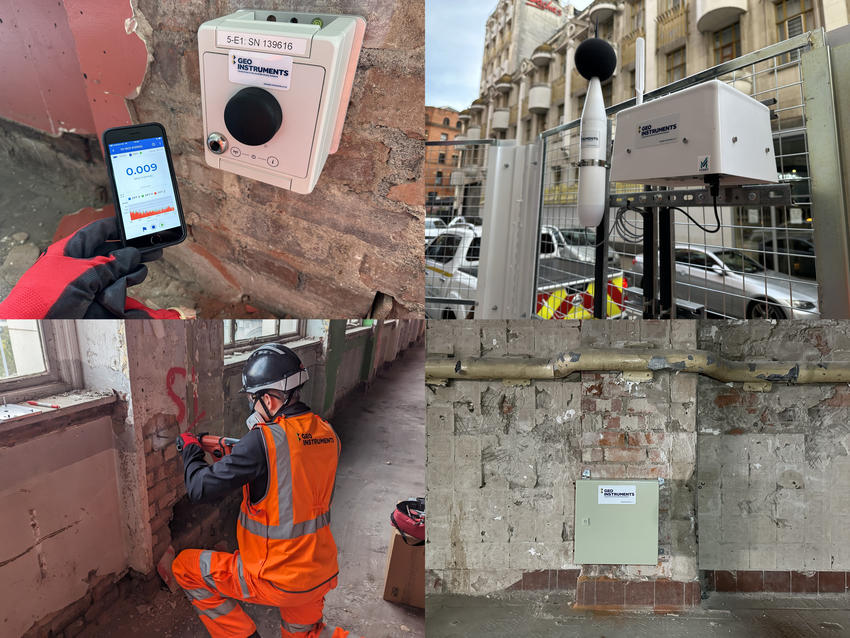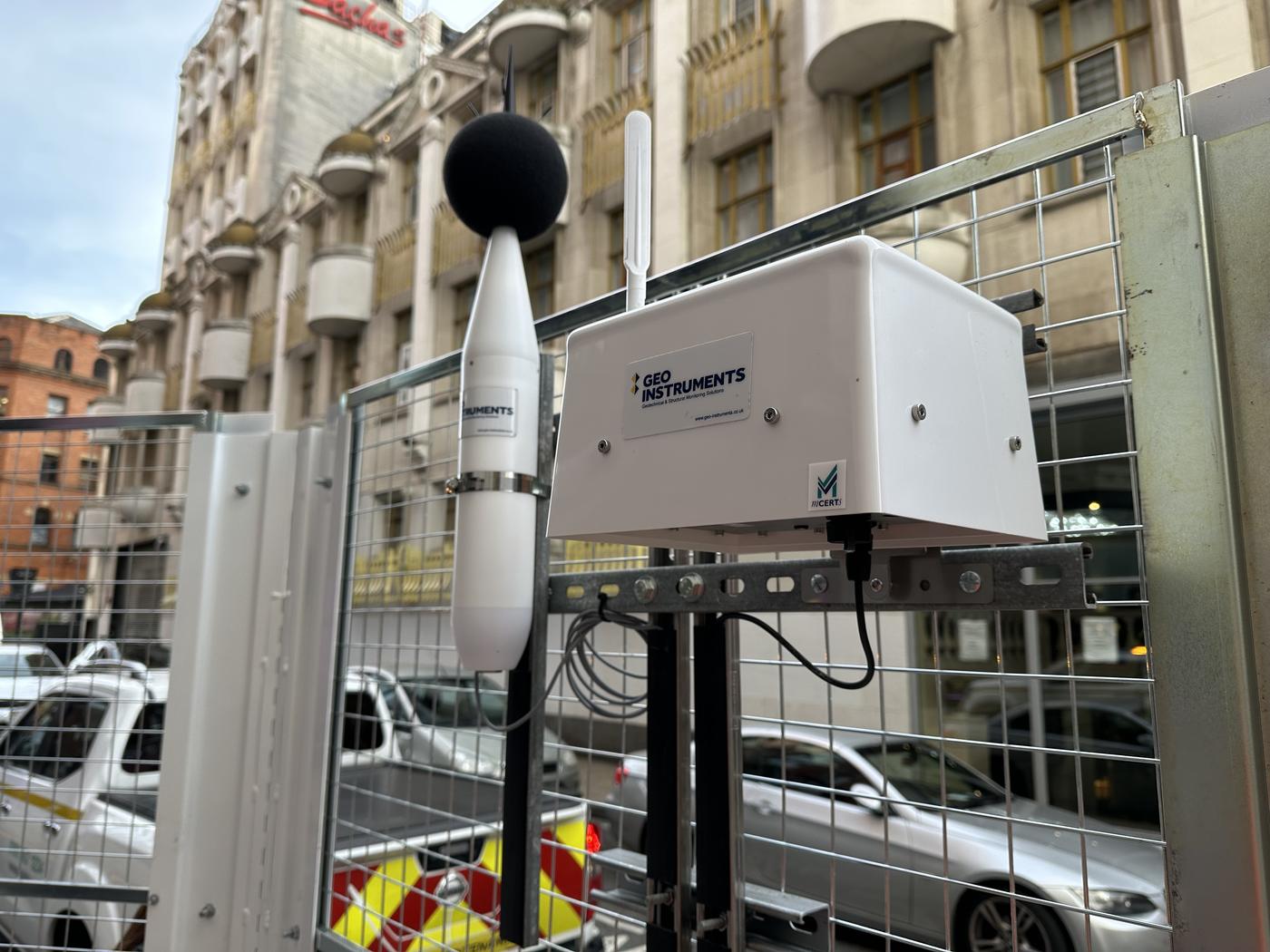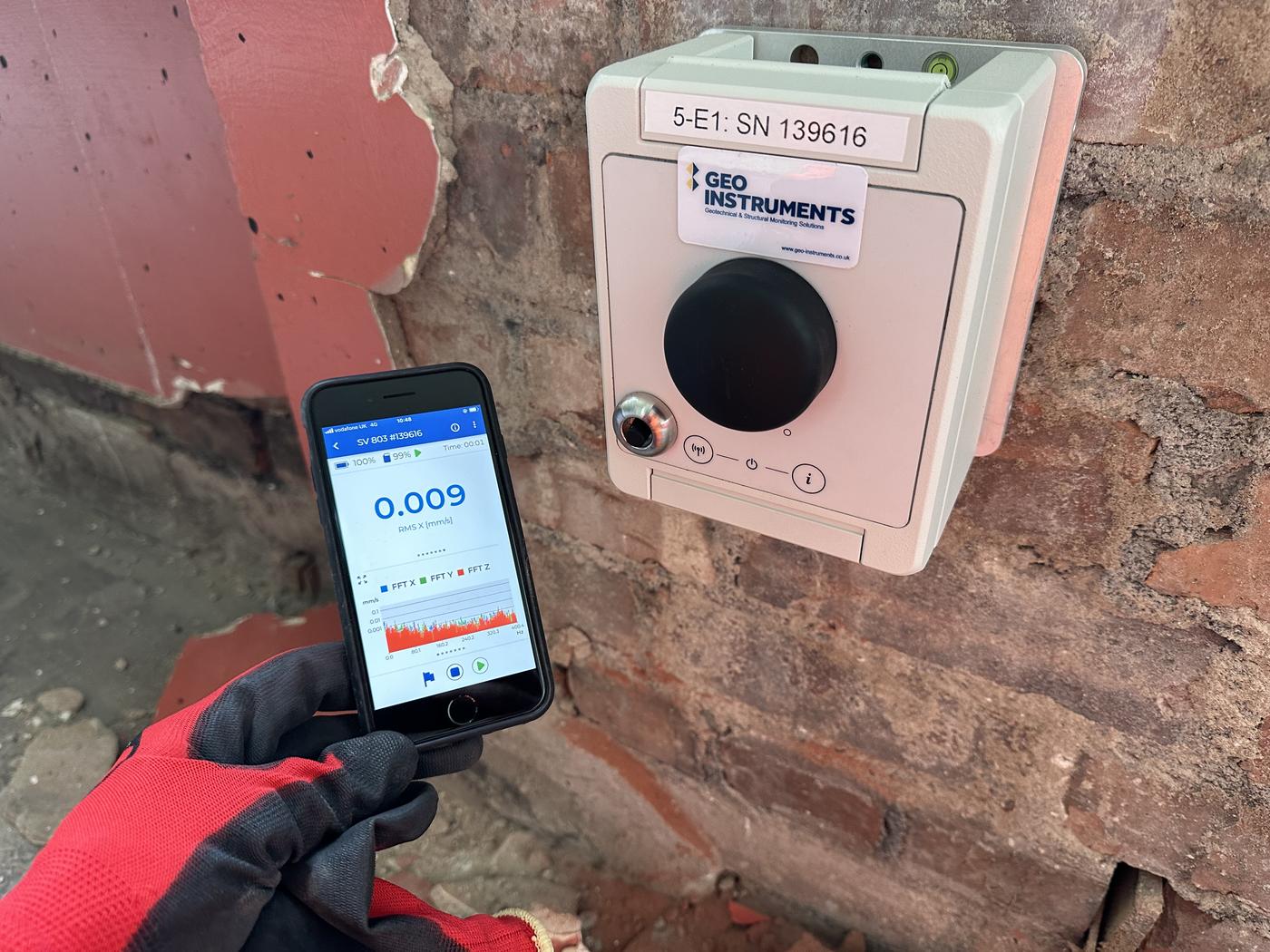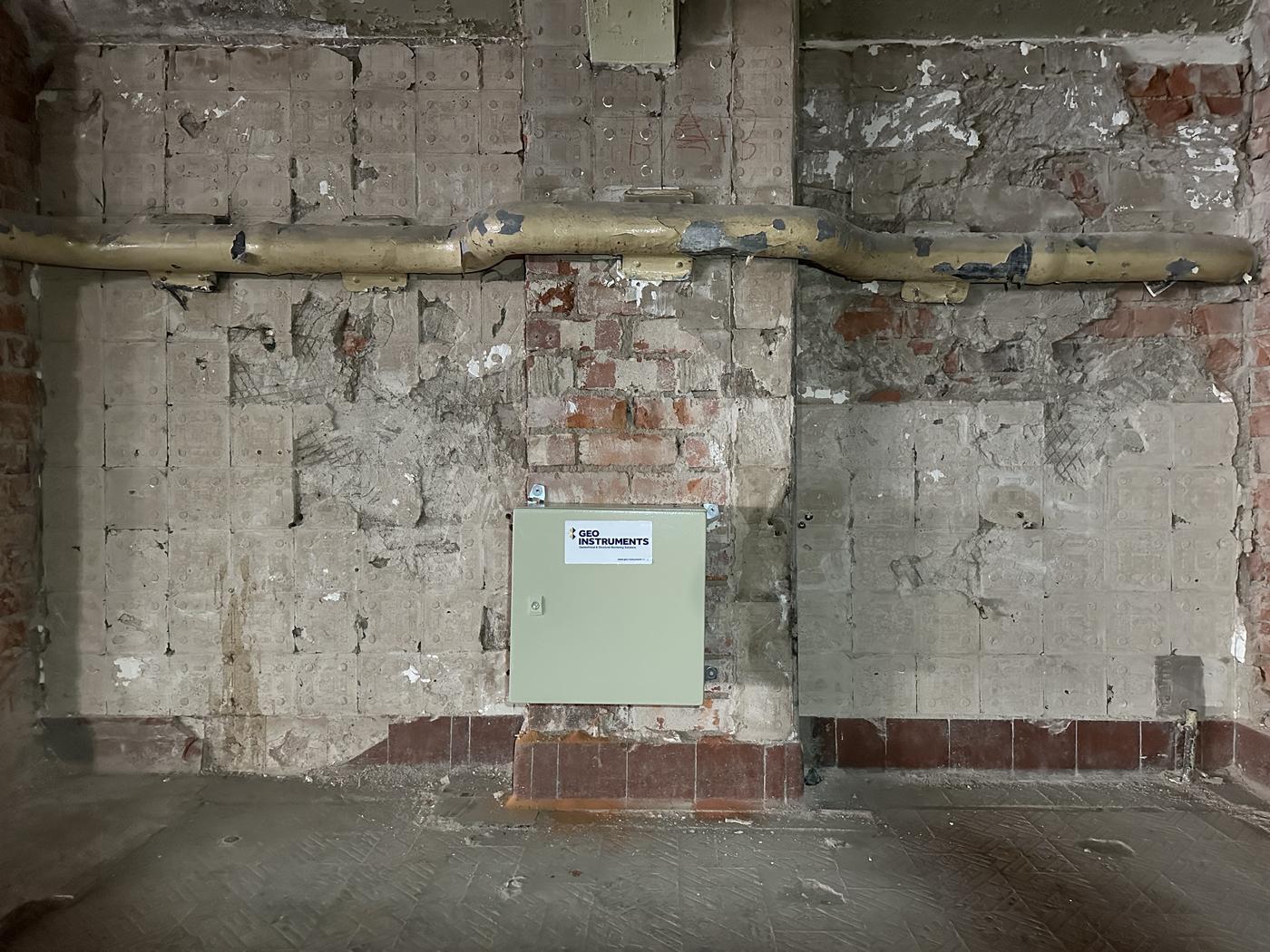As part of a redevelopment project to convert a longstanding commercial building into a mixed-use development in Manchester, GEO-Instruments have designed a comprehensive Vibration, Noise and Dust monitoring system.

During the redevelopment significant demolition and construction works are planned for the interior of the structure.
Due to the sensitive nature of the building, the city-center location of the site and the extensive interior works being undertaken, GEO-Instruments UK were contracted to supply and install a Vibration, Noise and Dust monitoring scheme that would match the demanding specification.
23 Triaxial Vibration Monitors were installed throughout the interior and exterior of the building across the ground, first and fifth floors.
This application requires particularly intensive monitoring due to a number of considerations, including multiple potential sources of vibration and critical structures that may be more susceptible to the effects of this vibration.
Planned piling, slab demolition, excavation, and removal of masonry or concrete all have the potential to produce significant amounts of vibration.
In addition to the structure of the building itself, there are multiple adjacent infrastructure assets that must be protected from excessive vibration. These assets include buried utilities and drainage as well as supports to the overhead lines that are attached to the façade of the building.
As most of the building’s outward appearance will remain unchanged post-redevelopment, special care needed to be taken to protect the building’s exterior from ongoing works and resultant vibration.



Noise and dust sensors were installed at two locations at the perimeter of the site.
Neighbouring residential buildings were identified as sensitive receptors. The monitoring of noise and dust levels caused by site work is essential for managing the impact on neighbours and personnel on-site.
A team of two GEO-Instruments engineers commissioned the instrumentation in stages over multiple site visits, working around the requirements of the site and main contractor.
In order to protect the vibration sensors against potential damage from site activity, each was fitted with a metal enclosure. These also served to house the attached external batteries that extend the lifespan of the sensors.
All instrumentation has been set up with an automated alert system with custom trigger levels to comply with the monitoring guidance set out by specialist engineering consultants to limit structural damage.
This system allows site personnel to get instant alerts when a threshold is breached, meaning that measures can be taken to mitigate any potential effects.
All project data is presented in QuickView, giving the client and contractor easy access to data records, reporting and visualisation tools.
Learn more about the benefits of Environmental Noise, Dust and Vibration Monitoring.